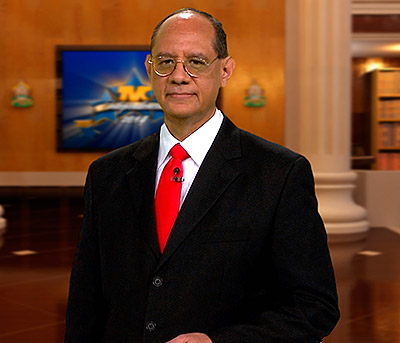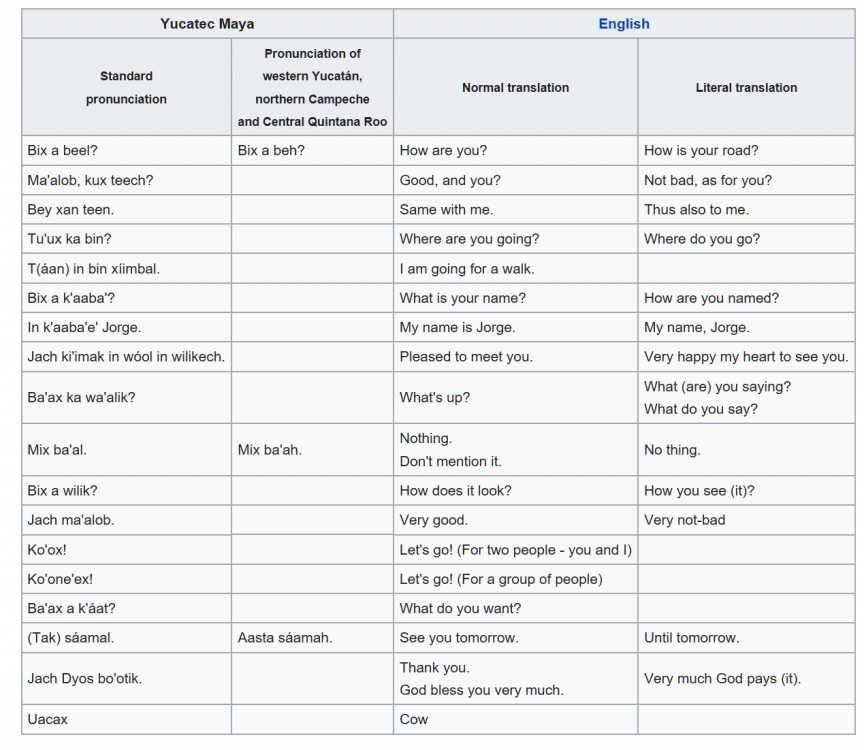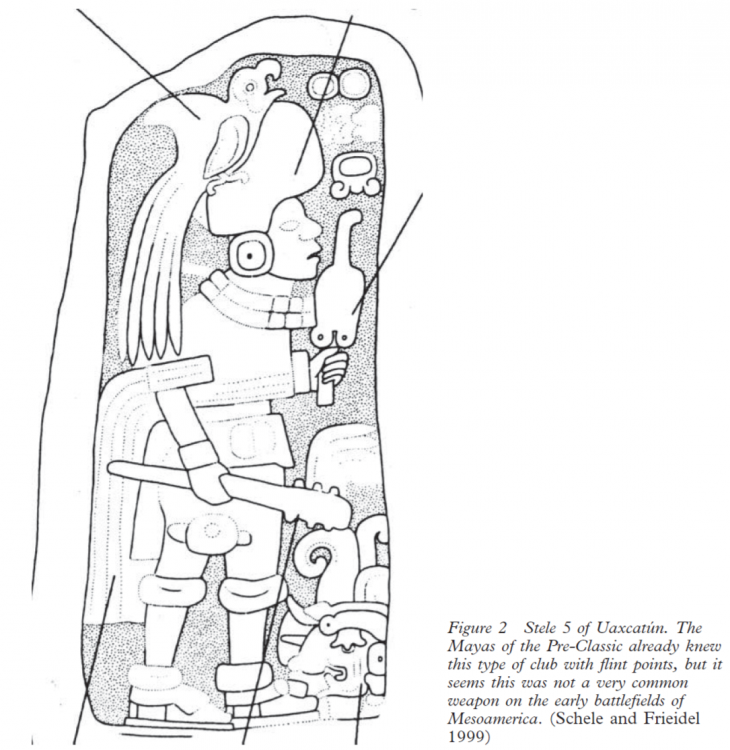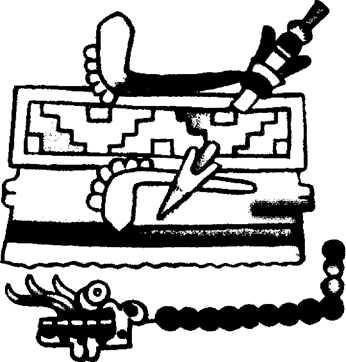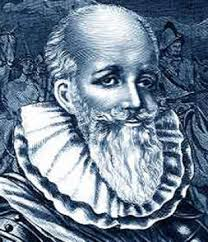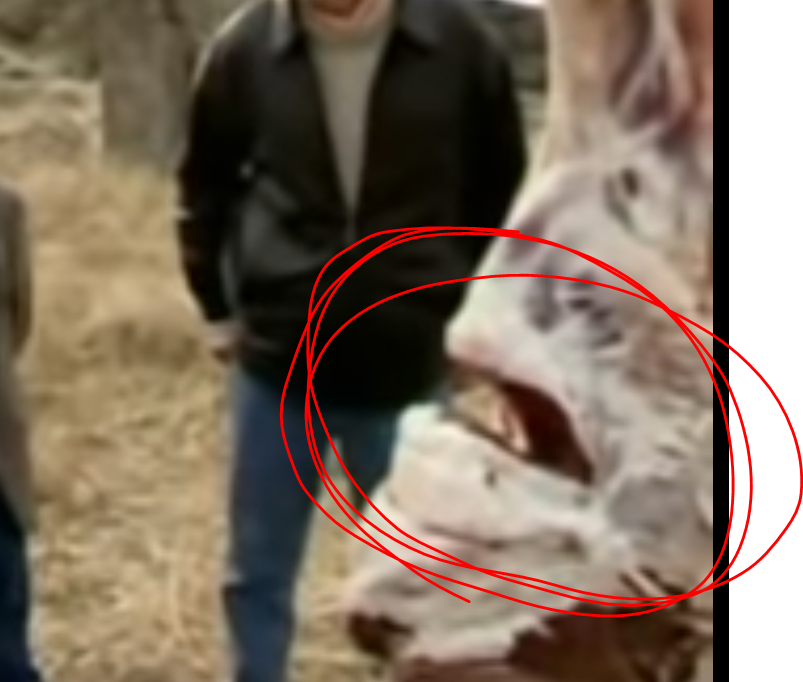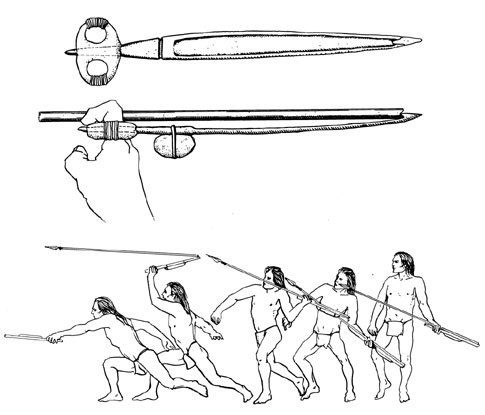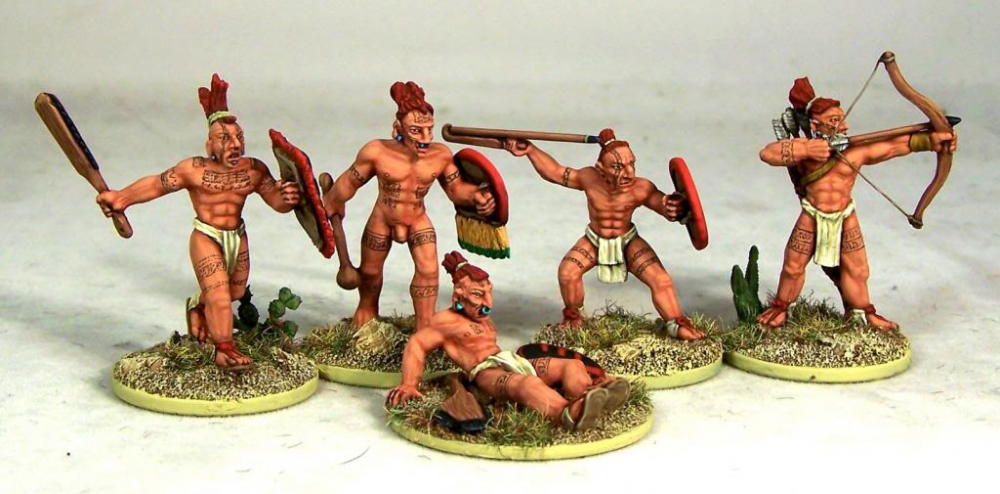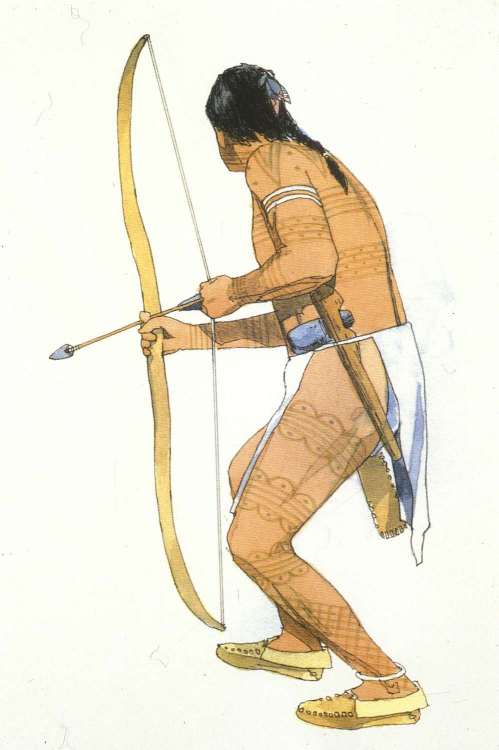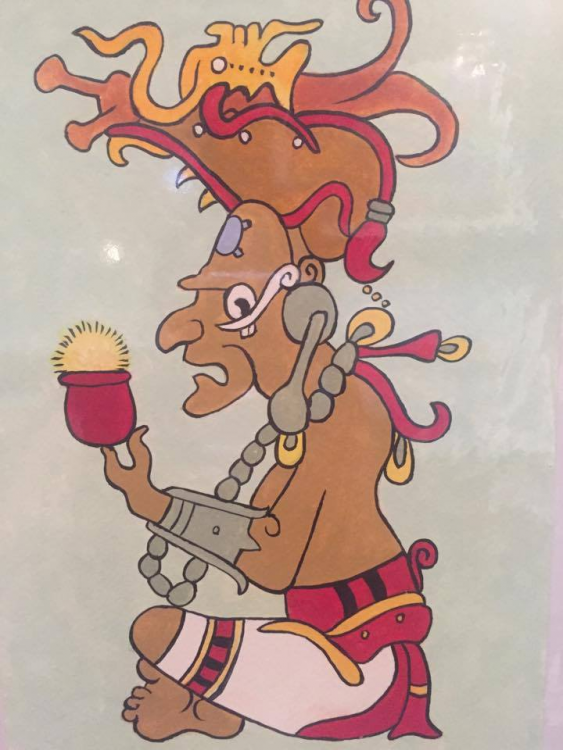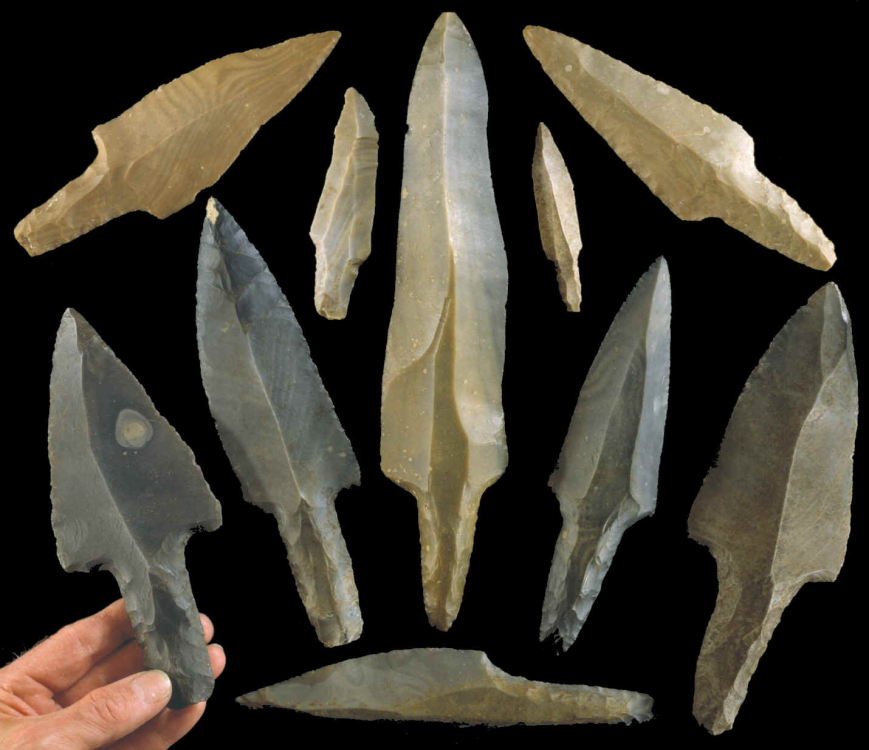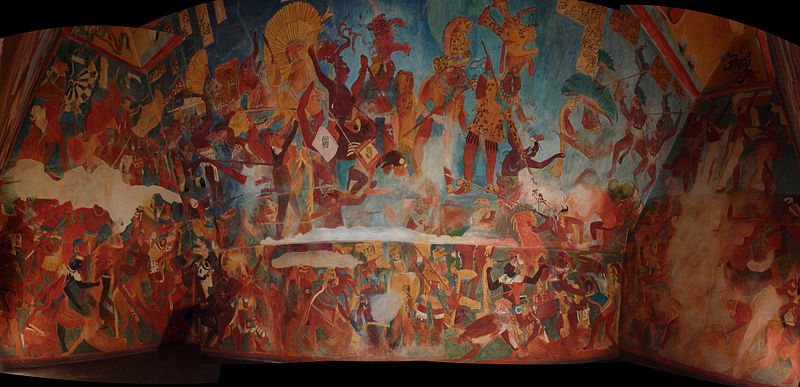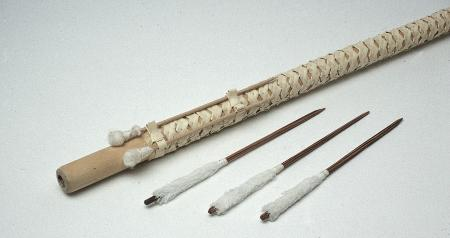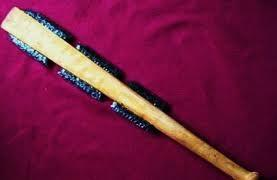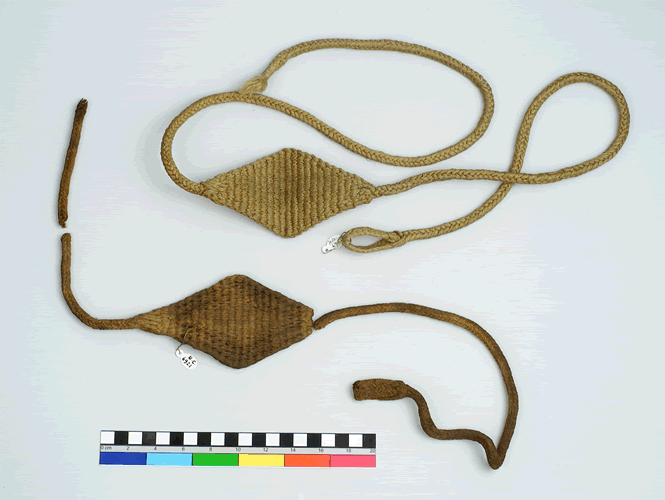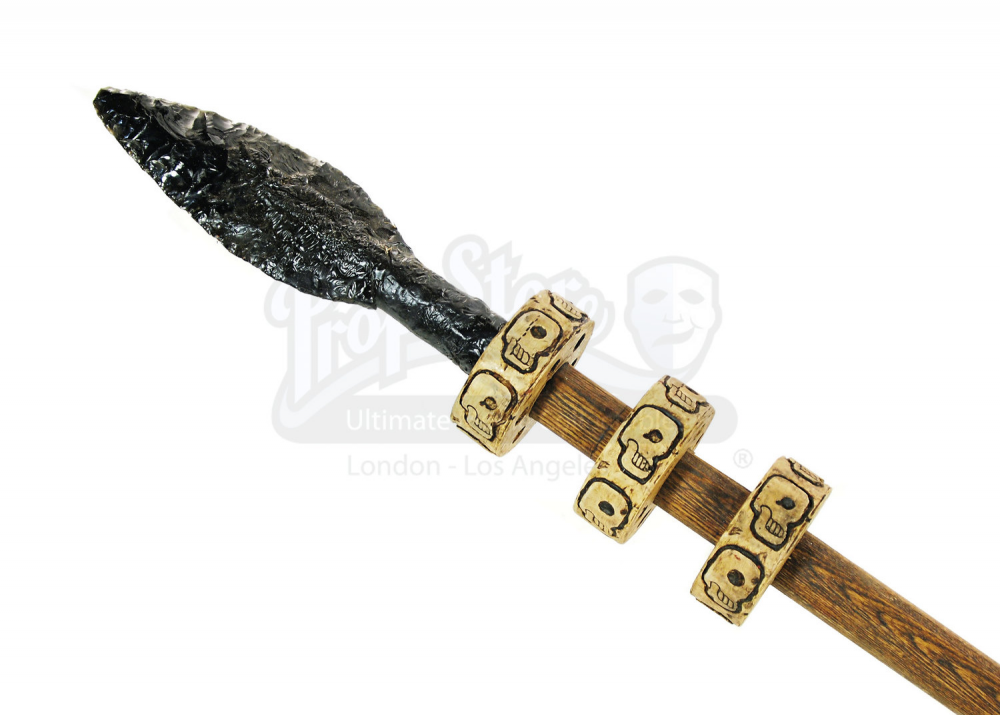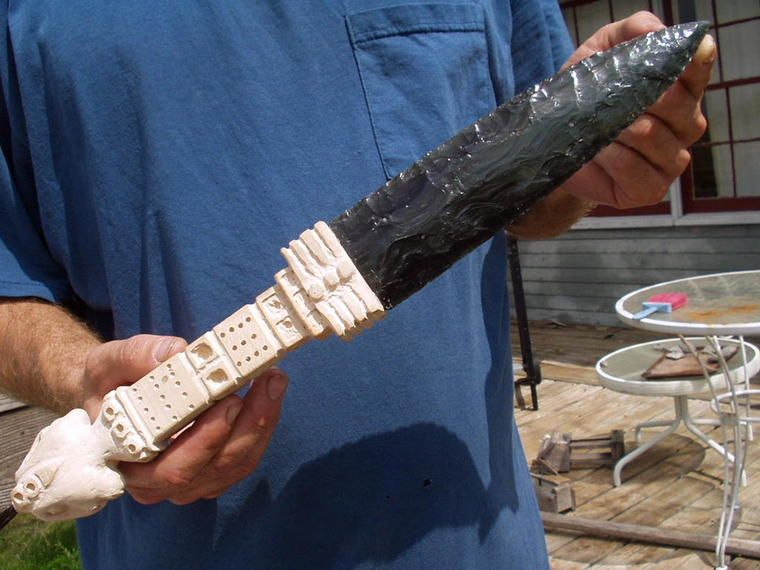-
Posts
25.684 -
Joined
-
Days Won
300
Everything posted by Lion.Kanzen
-
.thumb.png.ce58cea22940c255f5b0a735d5abee36.png)
Proposal, Mayan City States [preclassic and classic]
Lion.Kanzen replied to Lion.Kanzen's topic in Rise of the East
This month, researchers from the U.S. National Oceanic and Atmospheric Administration (NOAA) are combing the eastern Mexican coast for remnants of the Maya civilization, which once boasted a rich and sophisticated seafaring tradition. The current expedition focuses on the ancient port city of Vista Alegre, located where the Caribbean meets the Gulf of Mexico at the northeastern tip of the Yucatan Peninsula. The remote island site is thought to have been an important harbor and maritime trade stronghold for intermittent periods of time between 800 B.C. and the mid-15th century. “The maritime Maya have been described much like ancient seagoing Phoenicians,” Dominique Rissolo, one of the expedition’s chief scientists, said in a statement. “Maya trade was far-ranging between the Veracruz coast of modern Mexico and the Gulf of Honduras, with each port a link in a chain connecting people and ideas. Yet there is still much to learn about the extensive history and importance of the maritime Maya and how they adapted to life by the sea.” Historians believe that Maya sea commerce reached its zenith between 1100 and 1521 A.D., when the Spanish conquered the region and hastened the decline of indigenous Mesoamerican cultures. The Maya traded in a vast array of goods from across Mexico and Central America, including cotton, salt, jade, obsidian, cocoa, tropical bird feathers and slaves, Rissolo said. Previous expeditions to Vista Alegre in 2005 and 2008 revealed 29 structures, including platforms, mounds, raised causeways and a pyramid within a central plaza that may have been used by lookouts to monitor canoes. Researchers also found a narrow walkway linking the island port to a temple on the mainland. ADVERTISEMENT Thanks for watching! During the current expedition, the team especially hopes to uncover remains of Maya trading canoes, which Christopher Columbus’ son Ferdinand described in 1502 as fashioned from a single tree trunk and with a structure “not unlike those of Venetian gondolas.” These vessels could carry crews of 25 paddlers along with additional passengers and were piled high with cargo. (It was after capturing one of these boats that Ferdinand and his father puzzled over almond-like beans prized by the Maya and used to make a flavorful drink, becoming the first Europeans to encounter chocolate.) Accessible only by boat, the secluded Vista Alegre site is frequently battered by tropical storms, offers little drinking water and teems with various jungle- and lagoon-dwelling creatures, including mosquitoes, snakes, spiders and crocodiles. How, then, did the ancient Maya survive in such a hostile environment? The port city had to support not only a permanent population of several hundred people but also passing traders who would paddle up in their canoes, requiring food, water and a place to stay, according to the researchers. “In addition to understanding the role that Vista Alegre played in facilitating maritime trade and commerce, we also want to understand how the ancient Maya here at Vista Alegre and along this hidden coast transformed and interacted with their maritime landscape,” Rissolo explained in a video podcast earlier this month. “The Maya were primarily agriculturalists; they would tend to live in areas of deeper, fertile soils and access to fresh water. This is a very marginal landscape…so this is a challenge for us to figure out how the Maya were able to endure here for centuries, for millennia.” https://www.history.com/news/researchers-explore-the-seafaring-culture-of-the-maya During the 1500s and early 1600s, when Spanish explorers were first making contact with the indigenous inhabitants of the Florida, they made contact with a powerful nation on the southwest coast between Charlotte Harbor and Cape Sable. 1 The first contact was made in 1513 by Juan Ponce de Leon, when he landed at the mouth of the Caloosahatchee River in southwest Florida. His landing boats were attacked by Calusa war canoes, lined with round shields. Ponce de Leon’s description of the canoes was identical to murals of Chontal Maya war canoes in the Yucatan Peninsula. The region where most of its towns lay was in present day Charlotte and Lee Counties. 2 Calusa village sites can be found along the western half of the Caloosahatchee River. Various Spanish accounts called them either Calus, Calius, Caalius or Carlos. Hernando de Escalante Fontaneda, a Spaniard held captive by the Calusa in the 16th century, recorded that Calusa meant fierce people in their language. This may or may not be true. Kalos is the Muskogean root word for “star.” 3 https://www.accessgenealogy.com/florida/calusa-people.htm -
.thumb.png.ce58cea22940c255f5b0a735d5abee36.png)
Proposal, Mayan City States [preclassic and classic]
Lion.Kanzen replied to Lion.Kanzen's topic in Rise of the East
Kukulkan El Castillo Detail Head of the feathered serpent Kukulkan at the base of the Chichen Itza pyramid. Photo ©2009 Jackie Craven Just as modern-day architects design structures to capitalize on natural lighting, the Maya of Chichén Itzá built El Castillo to take advantage of a seasonal lighting phenomenon. The Pyramid of Kukulcan is positioned such that the sun's natural light is shadowed off the steps twice a year, creating an effect of a feathered serpent. Called the god Kukulcan, the serpent appears to slither down the pyramid's side during the spring and autumn equinox. The animated effect culminates at the base of the pyramid, with the carved feathered head of the serpent. In part, this detailed restoration has made Chichén Itzá a UNESCO World Heritage site and top tourist attraction. Mayan Temples Temple of the Warriors in Chichen Itza, Mexico. Photo ©2009 Jackie Craven The Temple de los Guerreros—Temple of the Warriors—at Chichén Itzá demonstrates the cultural spirituality of a people. The columns, both square and round, are not so different from the columns found in many parts of the world, including the Classical architecture of Greek and Rome. The Group of the Thousand Columns at the Temple of the Warriors no doubt held up an elaborate roof, which covered those humans being sacrificed and the statues that held human remains. The reclining statue of Chac Mool atop this temple may have held a human offering to the god Kukulcan, as the Temple of the Warriors faces the great Pyramid of Kukulcan El Castillo at Chichén Itzá. The most grand building of the ancient Mayan city is known to us today as a castle pyramid. In Tulum, the castle overlooks the Caribbean Sea. Although Mayan pyramids are not always built alike, most all have steep stairways with a low wall called an alfarda on each side—similar in use to a balustrade. Archeologists call these large ceremonial structures Monumental Architecture. Modern architects may call these buildings Public Architecture, as they are places where the public gathers. In comparison, the well-known pyramids in Giza have smoother sides and were built as tombs. Astronomy and mathematics were important to Mayan civilization. In fact, Chichén Itzá has an observatory building similar to ancient structures found around the world. Many of the great ancient cities and territories had walls around them. Although built thousands of years ago, ancient Tulum is really not that different from urban centers or even vacation getaways we know today. The walls of Tulum may remind you of Golden Oak Residences at Walt Disney World Resort, or, indeed, of any modern-day gated community. Then, as now, residents wanted to create a safe, protected environment for work and play. -
.thumb.png.ce58cea22940c255f5b0a735d5abee36.png)
Proposal, Mayan City States [preclassic and classic]
Lion.Kanzen replied to Lion.Kanzen's topic in Rise of the East
The Maya economy, which is to say the subsistence and trade networks of the Classic Period Maya [ca AD 250-900], was dependent to a large extent on the way the various centers interacted with each other and with the rural areas under their control. The Maya were never one organized civilization under one leader, they were a loose collection of independent city-states whose individual power waxed and waned. Much of that variation in power was the result of the changes in the economy, in particular, the exchange network that moved elite and ordinary goods around the region. The city states are collectively designated "Maya" by and large because they shared a religion, architecture, economy, and political structure: today there are over twenty different Maya languages. Subsistence The subsistence methodology for people who lived in the Maya region during the Classic Period was primarily farming and had been since about 900 BC. People in the rural areas lived in sedentary villages, relying heavily on a combination of domestic maize, beans, squash, and amaranth. Other plants domesticated or exploited by Maya farmers included cacao, avocado, and breadnut. Only a handful of domesticated animals were available to the Maya farmers, including dogs, turkeys, and stingless bees. Highland and Lowland Maya communities both had difficulties with obtaining and controlling water. Lowland sites like Tikal built immense water reservoirs to keep potable water available throughout the dry season; highland sites like Palenque built underground aqueducts to avoid frequent flooding of their plazas and residential areas. In some places, the Maya people used raised field agriculture, artificially raised platforms called chinampas, and in others, they relied on slash and burn agriculture. Maya architecture also varied. Regular houses in the rural Maya villages were typically organic pole buildings with thatched roofs. Classic period Maya urban residences more elaborate than rural ones, with stone building features, and higher percentages of decorated pottery. In addition, Maya cities were supplied with agricultural products from the rural areas--crops were grown in fields immediately adjoining the city, but supplements such as exotic and luxury goods were brought in as trade or tribute. Long Distance Trade The Maya engaged in long distance trade, beginning at least as early as 2000-1500 BC, but little is known about its organization. Trade connections are known to have been established between pre-classic Maya and people in Olmec towns and Teotihuacan. By about 1100 BC, the raw material for goods such as obsidian, jade, marine shell, and magnetite was brought into the urban centers. There were periodic markets established in most of the Maya cities. The volume of trade varied over time--but much of what archaeologists use to identify a community that was hooked into the "Maya" sphere was the shared material goods and religion that were no doubt established and supported by the trade networks. Symbols and iconographic motifs depicted on highly crafted items like pottery and figurines were shared over a widespread area, along with ideas and religion. The interregional interaction was driven by the emergent chiefs and elites, who had greater access to specific classes of goods and information. Craft Specialization During the Classic period certain artisans, especially those makers of polychrome vases and carved stone monuments, produced their goods specifically for the elites, and their production and styles were controlled by those elites. Other Maya craft workers were independent of direct political control. For example, in the Lowland region, the production of everyday pottery and chipped stone tool manufacture took place in smaller communities and rural settings. Those materials were likely moved partly through market exchange and through non-commercialized kin-based trade. By 900 AD Chichén Itzá had become the dominant capital with a larger region than any other Maya city center. Along with Chichén's militaristic regional conquest and the extraction of tribute came a large increase in the number and variety of prestige goods flowing through the system. Many of the previously independent centers found themselves voluntarily or forcibly integrated into Chichén's orbit. Post-classic trade during this period included cotton cloth and textiles, salt, honey and wax, slaves, cacao, precious metals, and macaw feathers. American archaeologist Traci Ardren and colleagues note that there is an explicit reference to gendered activities in the Late Post Classic imagery, suggesting that women played an enormous role in the Maya economy, particularly in spinning and weaving, and manta production. Maya Canoes There is no doubt that increasingly sophisticated sailing technology impacted the amount of trade that moved along the Gulf Coast. Trade was moved along riverine routes, and Gulf Coast communities served as key intermediaries between the highlands and the Peten lowlands. Waterborne commerce was an ancient practice among the Maya, extending back to the late Formative period; by the Post-classic they were using seagoing vessels that could carry much heavier loads than a simple canoe. During his 4th voyage to the Americas, Christopher Columbus reported that he met a canoe off the coast of Honduras. The canoe was as long as a galley and 2.5 meters (8 feet) wide; it held a crew of about 24 men, plus the captain and a number of women and children. The vessel's cargo included cacao, metal products (bells and ornamental axes), pottery, cotton clothing, and wooden swords with inset obsidian (macuahuitl). Elite Classes and Social Stratification Maya economics were intimately tied to hierarchical classes. The social disparity in wealth and status separated the nobles from ordinary farmers, but only slaves were a sharply bounded social class. Craft specialists--artisans who specialized in making pottery or stone tools--and minor merchants were a loosely defined middle group that ranked below the aristocrats but above common farmers. In Maya society, slaves were made up of criminals and prisoners obtained during warfare. Most slaves performed domestic service or agricultural labor, but some became victims for the sacrificial rituals. The men--and they were mostly men--who ruled the cities had sons whose family and lineage connections led them to continue family political careers. Younger sons who had no available offices to step into or were unsuited for political life turned to commerce or went into the priesthood. -
.thumb.png.ce58cea22940c255f5b0a735d5abee36.png)
Proposal, Mayan City States [preclassic and classic]
Lion.Kanzen replied to Lion.Kanzen's topic in Rise of the East
Maya Civilization Ritual Intoxicants: Chocolate (Theobroma), blache (fermented honey and an extract from the balche tree; morning glory seeds, pulque (from agave plants), tobacco, intoxicating enemas, Maya Blue Sweat baths: Piedras Negras, San Antonio, Cerén Astronomy: The Maya tracked the sun, moon, and Venus. Calendars include eclipse warnings and safe periods, and almanacs for tracking Venus. Observatories: built at Chichén Itzá Maya Gods: What we know of Maya religion is based on writings and drawings on codices or temples. A few of the gods include: God A or Cimi or Cisin (god of death or flatulent one), God B or Chac, (rain and lightning), God C (sacredness), God D or Itzamna (creator or scribe or learned one), God E (maize), God G (sun), God L (trade or merchant), God K or Kauil, Ixchel or Ix Chel (goddess of fertility), Goddess O or Chac Chel. There are others; and in the Maya pantheon, there are sometimes combined gods, glyphs for two different gods appearing as one glyph. Death and Afterlife: Ideas about death and the afterlife are little known, but the entry to the underworld was called Xibalba or "Place of Fright" -
.thumb.png.ce58cea22940c255f5b0a735d5abee36.png)
Proposal, Mayan City States [preclassic and classic]
Lion.Kanzen replied to Lion.Kanzen's topic in Rise of the East
Highland and Lowland Maya The Maya civilization covered an enormous area with a large variation of environments, economies, and growth of the civilization. Scholars address some of the Maya cultural variation by studying separate issues related to the climate and environment of the region. The Maya Highlands are the southern part of the Maya civilization, included the mountainous region in Mexico (particularly Chiapas state), Guatemala and Honduras. The Maya Lowlands make up the northern segment of the Maya region, including Mexico's Yucatan peninsula, and adjacent parts of Guatemala and Belize. A Pacific coastal piedmont range north of the Soconusco had fertile soils, dense forests and mangrove swamps. See Maya Lowlands and Maya Highlands for in-depth information. The Maya civilization was certainly never an "empire", inasmuch as one person never ruled the entire region. During the Classic period, there were several strong kings at Tikal, Calakmul, Caracol and Dos Pilas, but none of them ever conquered the others.It's probably best to think of the Maya as a collection of independent city-states, who shared some ritual and ceremonial practices, some architecture, some cultural objects. The city-states traded with one another, and with the Olmec and Teotihuacan polities (at different times), and they also warred with one another from time to time. Environment: The Maya Lowland region below 800 meters is tropical with rainy and dry seasons. There is little-exposed water except in lakes in limestone faults, swamps, and cenotes-natural sinkholes in the limestone that are geologically a result of the Chicxulub crater impact. Originally, the area was blanketed with multiple canopied forests and mixed vegetation. The Highland Maya regions include a string of volcanically active mountains. Eruptions have dumped rich volcanic ash throughout the region, leading to deep rich soils and obsidian deposits. Climate in the highland is temperate, with rare frost. Upland forests originally were mixed pine and deciduous trees. -
.thumb.png.ce58cea22940c255f5b0a735d5abee36.png)
Proposal, Mayan City States [preclassic and classic]
Lion.Kanzen replied to Lion.Kanzen's topic in Rise of the East
The Maya Preclassic Period: People first came to Mexico and Central America millennia ago, living as hunter-gatherers in the rain forests and volcanic hills of the region. They first began developing cultural characteristics associated with the Maya civilization around 1800 B.C. on Guatemala's western coast. By 1000 B.C. the Maya had spread throughout the lowland forests of southern Mexico, Guatemala, Belize and Honduras. The Maya of the Preclassic period lived in small villages in basic homes and dedicated themselves to subsistence agriculture. The major cities of the Maya, such as Palenque, Tikal and Copán, were established during this time and began to prosper. Basic trade was developed, linking the city-states and facilitating cultural exchange. The Late Preclassic Period: The late Maya Preclassic Period lasted roughly from 300 B.C. to 300 A.D. and is marked by developments in Maya culture. Great temples were constructed: their facades were decorated with stucco sculptures and paint. Long-distance trade flourished, particularly for luxury items such as jade and obsidian. Royal tombs dating from this time are more elaborate than those from the early and middle Preclassic periods and often contained offerings and treasures. The Early Classic Period: The Classic Period is considered to have begun when the Maya began carving ornate, beautiful stelae (stylized statues of leaders and rulers) with dates given in the Maya long count calendar. The earliest date on a Maya stela is 292 A.D. (Tikal) and the latest is 909 A.D. (Tonina). During the early Classic Period (300-600 A.D.) the Maya continued developing many of their most important intellectual pursuits, such as astronomy, mathematics and architecture. During this time, the city of Teotihuacán, located near Mexico City, exerted a great influence on the Maya city-states, as is shown by the presence of pottery and architecture done in the Teotihuacán style. The Late Classic Period: The Maya late Classic Period (600-900 A.D.) marks the high point of Maya culture. Powerful city-states like Tikal and Calakmul dominated the regions around them and art, culture and religion reached their peaks. The city-states warred, allied with, and traded with one another. There may have been as many as 80 Maya city-states during this time. The cities were ruled by an elite ruling class and priests who claimed to be directly descended from the Sin, Moon, stars and planets. The cities held more people than they could support, so trade for food as well as luxury items was brisk. The ceremonial ball game was a feature of all Maya cities. https://www.thoughtco.com/timeline-of-the-ancient-maya-2136181 -
.thumb.png.ce58cea22940c255f5b0a735d5abee36.png)
Proposal, Mayan City States [preclassic and classic]
Lion.Kanzen replied to Lion.Kanzen's topic in Rise of the East
Ballcourt Chichen Itza El Tijal -
.thumb.png.ce58cea22940c255f5b0a735d5abee36.png)
Proposal, Mayan City States [preclassic and classic]
Lion.Kanzen replied to Lion.Kanzen's topic in Rise of the East
K'iche' Mayans https://en.wikipedia.org/wiki/K'iche'_language -
.thumb.png.ce58cea22940c255f5b0a735d5abee36.png)
Proposal, Mayan City States [preclassic and classic]
Lion.Kanzen replied to Lion.Kanzen's topic in Rise of the East
Mayans Yucatecs https://www.facebook.com/Belizeyucatecmaya https://en.wikipedia.org/wiki/Yucatec_Maya_language Language examples. https://www.youtube.com/watch?v=B84RcosLqV0 Elite conceptual looking. -
.thumb.png.ce58cea22940c255f5b0a735d5abee36.png)
Proposal, Mayan City States [preclassic and classic]
Lion.Kanzen replied to Lion.Kanzen's topic in Rise of the East
Clubs https://www.ancient-origins.net/news-history-archaeology/traumatic-skull-injuries-reveal-mayans-used-spiked-clubs-001477 -
.thumb.png.ce58cea22940c255f5b0a735d5abee36.png)
Proposal, Mayan City States [preclassic and classic]
Lion.Kanzen replied to Lion.Kanzen's topic in Rise of the East
But can cutting by many hit, because their sharpest probably will be most sharpest weapon in the game -
.thumb.png.ce58cea22940c255f5b0a735d5abee36.png)
Proposal, Mayan City States [preclassic and classic]
Lion.Kanzen replied to Lion.Kanzen's topic in Rise of the East
Most Deadliest close combat weapon. Is very brutal injury. Q https://s nag. Another account by a companion of Cortés known as The Anonymous Conqueror tells a similar story of its effectiveness: They have swords of this kind – of wood made like a two-handed sword, but with the hilt not so long; about three fingers in breadth. The edges are grooved, and in the grooves they insert stone knives, that cut like a Toledo blade. I saw one day an Indian fighting with a mounted man, and the Indian gave the horse of his antagonist such a blow in the breast that he opened it to the entrails, and it fell dead on the spot. And the same day I saw another Indian give another horse a blow in the neck, that stretched it dead at his feet. — "Offensive and Defensive Arms", page 23[21] Another account by Francisco de Aguilar reads: They used ... cudgels and swords and a great many bows and arrows ... One Indian at a single stroke cut open the whole neck of Cristóbal de Olid’s horse, killing the horse. The Indian on the other side slashed at the second horseman and the blow cut through the horse’s pastern, whereupon this horse also fell dead. As soon as this sentry gave the alarm, they all ran out with their weapons to cut us off, following us with great fury, shooting arrows, spears and stones, and wounding us with their swords. Here many Spaniards fell, some dead and some wounded, and others without any injury who fainted away from fright Basically low pierce vs chainmail or lorica hamata. -
.thumb.png.ce58cea22940c255f5b0a735d5abee36.png)
Top 10 STRATEGY Games of 2018
Lion.Kanzen replied to jonbaer's topic in Introductions & Off-Topic Discussion
Off topic forum. @feneur can you...? -
.thumb.png.ce58cea22940c255f5b0a735d5abee36.png)
Proposal, Mayan City States [preclassic and classic]
Lion.Kanzen replied to Lion.Kanzen's topic in Rise of the East
Donde puedo buscarlo? -
.thumb.png.ce58cea22940c255f5b0a735d5abee36.png)
===[TASK]=== 0 A.D Ships Update.
Lion.Kanzen replied to Alexandermb's topic in Eyecandy, custom projects and misc.
Like this? https://www.youtube.com/watch?v=pS-M30LISJQ -
Is similar to happen to Japan, a invaders take the first settlers? I don't have any idea about Oceanian culture.
-
.thumb.png.ce58cea22940c255f5b0a735d5abee36.png)
Proposal, Mayan City States [preclassic and classic]
Lion.Kanzen replied to Lion.Kanzen's topic in Rise of the East
Historical Accuracy vs Hollywood. ---Gods--- Itzamna Kukulkan. This is very controversial for me. But is from two different. Sources. http://www.ancientpages.com/2017/02/07/kukulkan-feathered-serpent-and-mighty-mayan-snake-god/ Very weird, and nonsolid evidence or primary source. -
.thumb.png.ce58cea22940c255f5b0a735d5abee36.png)
Proposal, Mayan City States [preclassic and classic]
Lion.Kanzen replied to Lion.Kanzen's topic in Rise of the East
Weapons. Maysn replica knife. https://en.wikipedia.org/wiki/Maya_warfare Mayans at War: Long Distance Weapons The Mayans had both long-distance weapons and melee weapons. The long distance ones included bow and arrow, blowgun, slings and throwing spears. When the atlatl or spear thrower was brought to the Mayans from Teotihuacan around 400 A.D., it was quickly adopted and became the Mayans’ dominant long distance weapon. The atlatl greatly increased the accuracy, force and range of the spear; when thrown from an atlatl a spear reportedly could pierce the Spaniards’ metal armor. The blowgun was predominantly used for hunting, but it had some wartime uses as well. Mayan warriors used bow and arrows more during the Post-Classical era. https://www.historyonthenet.com/mayans-at-war :.. Sling. http://www.native-languages.org/weapons.htm -
Me the first time to see the project around... 2004
-
Polynesian?, looks interesting.
-
.thumb.png.ce58cea22940c255f5b0a735d5abee36.png)
Proposal, Mayan City States [preclassic and classic]
Lion.Kanzen replied to Lion.Kanzen's topic in Rise of the East
-
I make this reply in memory of Dr Rolando Zelaya y Ferrera
QuoteRolando Francisco Zelaya y Ferrera has a degree in History and Information Applied Technologies, a Bachelor of History, a Doctor of Historical Archeology and Archeology and Cultural Heritage, with 3 related credits in Anthropology, Ethnology and Cultural Heritage, as well as a PhD holder Honoris Causa in Museological Informatics.
He serves to write the story of my country. And was my teacher.
